
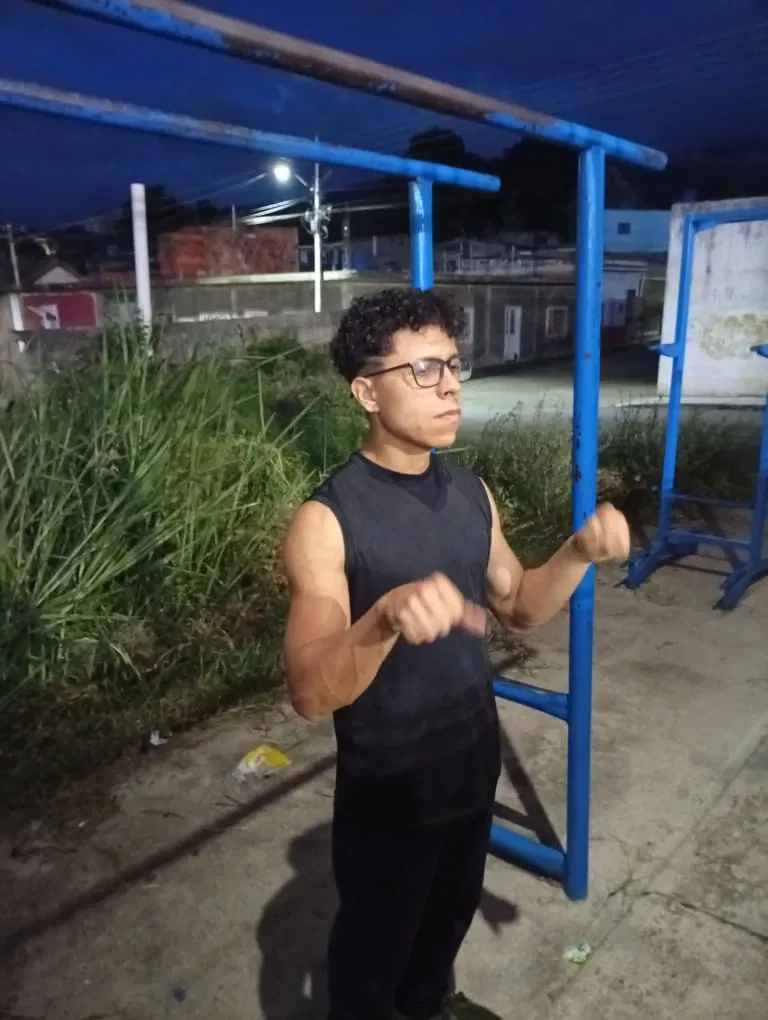

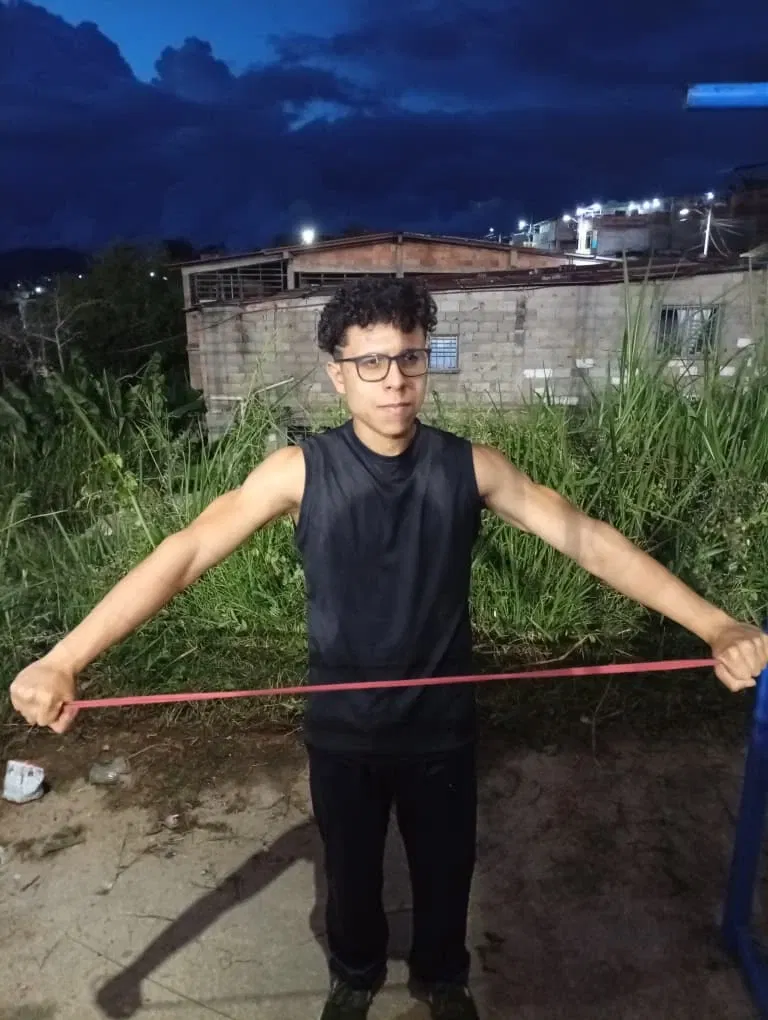
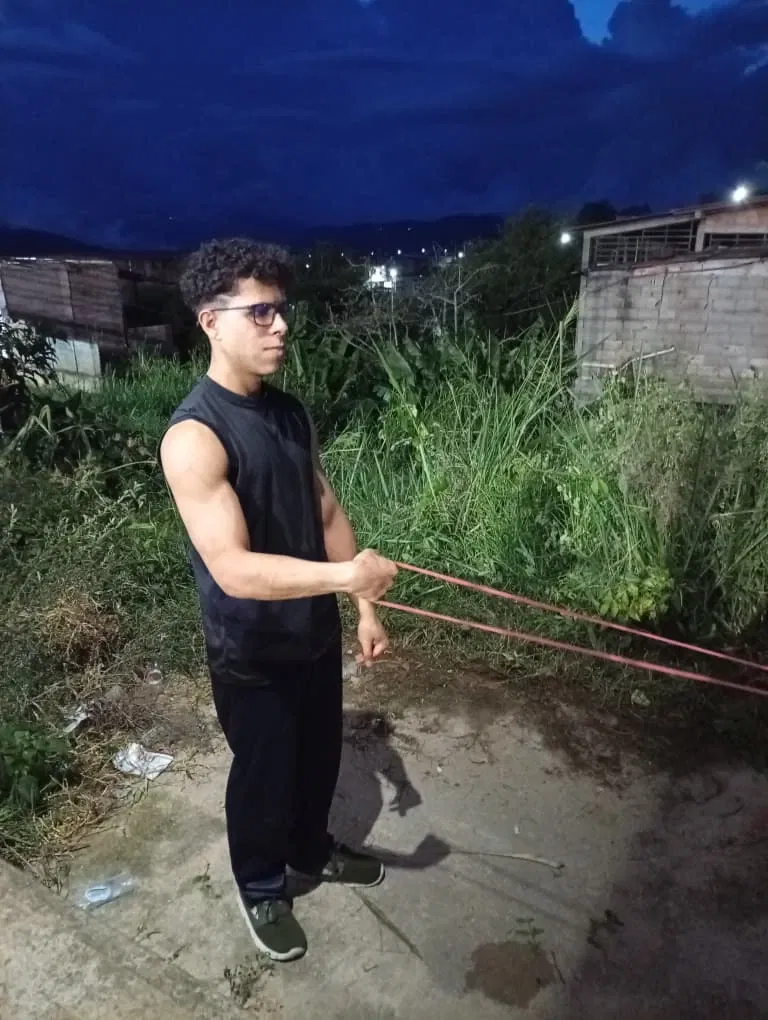

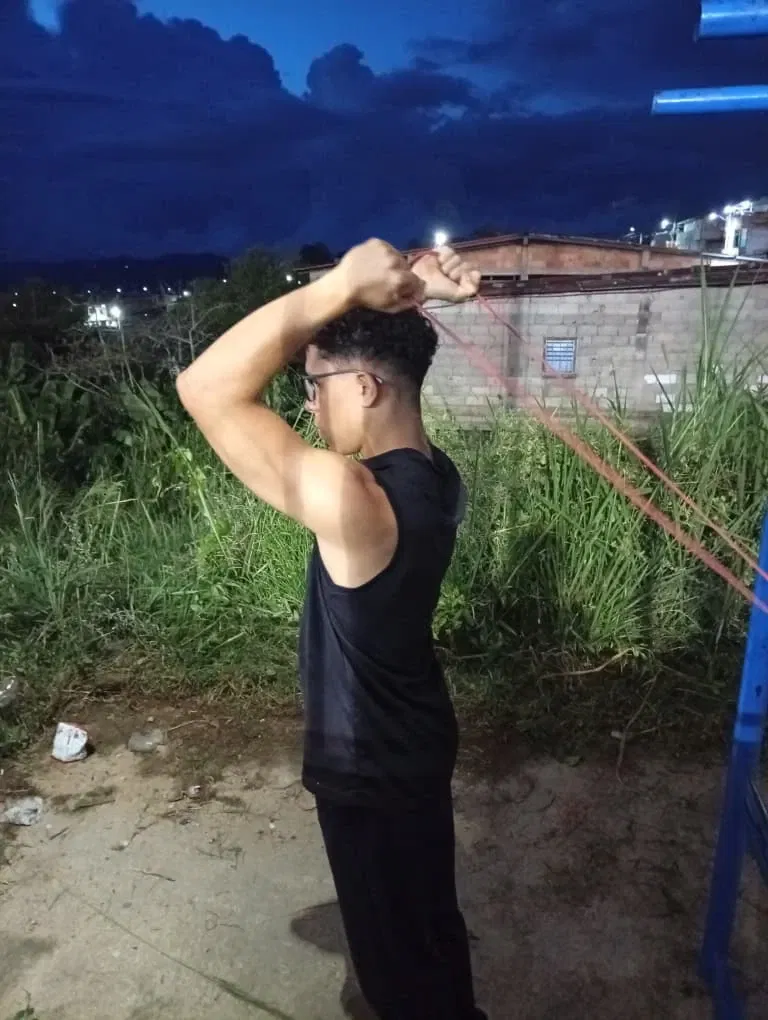
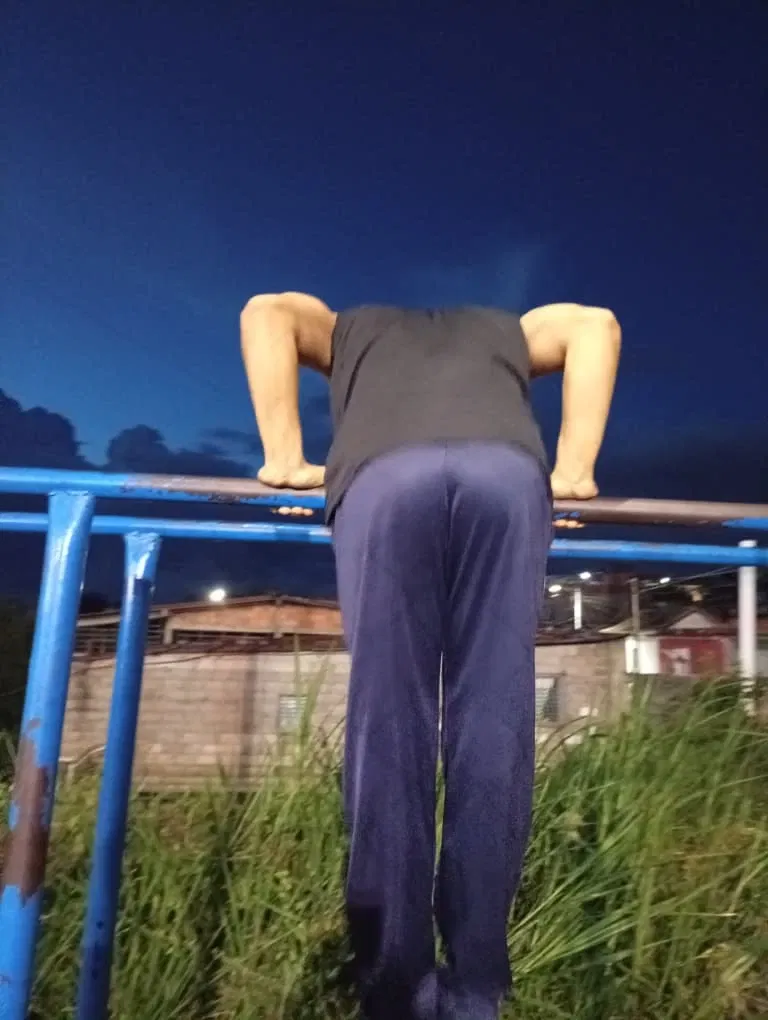

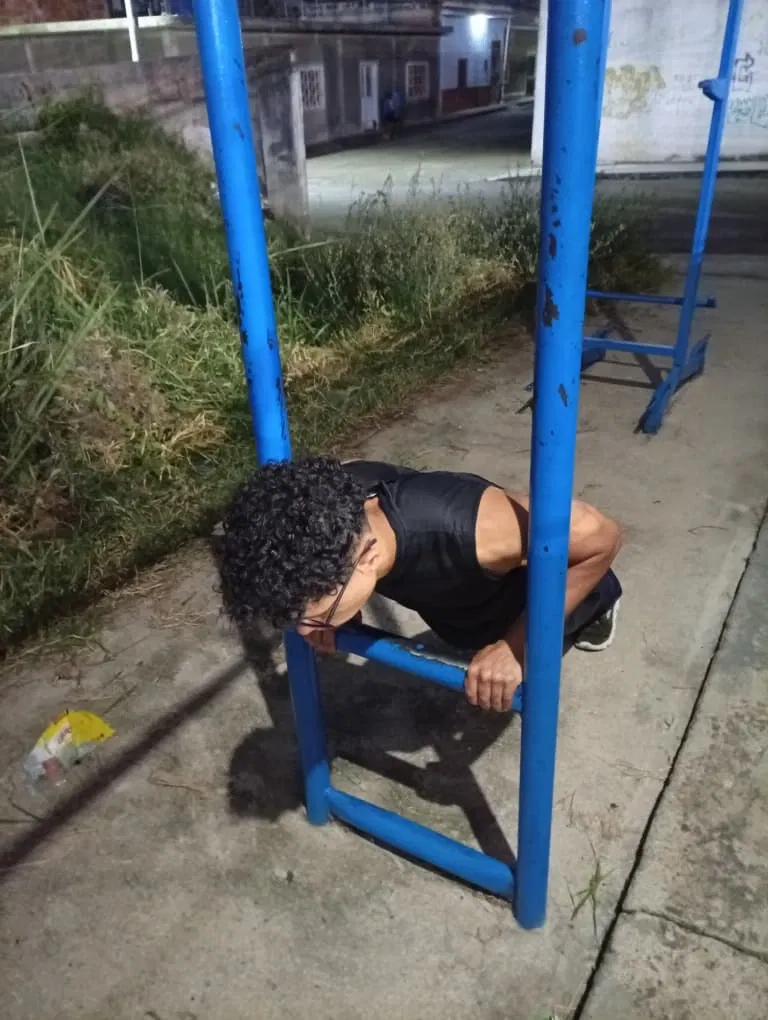
|
Español
|
English
| |-|-|
¡Hola, comunidad de #Hive y #SWC! Espero que todos se encuentren muy bien. Para mí es un gusto compartirles mi nueva publicación del día de hoy.
Hoy les voy a hablar sobre un aspecto fundamental en la calistenia: el calentamiento. Este es un elemento primordial al momento de realizar rutinas en esta disciplina, pero a menudo lo pasamos por alto. Sin embargo, es esencial para prevenir lesiones y optimizar nuestro rendimiento. En esta publicación, les mostraré algunos errores comunes que cometemos al iniciar una rutina de calistenia sin un calentamiento previo. Además, incluiré imágenes con ejemplos de lo que podrían hacer para prepararse adecuadamente. Todo esto y más lo verán en esta publicación. Sin más nada que decir, comencemos.
¡Hello, #Hive and #SWC community! I hope you're all doing well. It's a pleasure to share my new post today.
Today, I'm going to talk about a fundamental aspect of calisthenics: the warm-up. This is a key element when performing calisthenics routines, but we often overlook it. However, it's essential for preventing injuries and optimizing our performance. In this post, I'll show you some common mistakes we make when starting a calisthenics routine without warming up first. I'll also include images with examples of what you could do to properly prepare. You'll see all this and more in this post. Without further ado, let's begin.
---
Antes de explicar cómo calentar correctamente, quiero destacar por qué es importante hacerlo antes de entrenar calistenia. En primer lugar, el calentamiento ayuda a prevenir lesiones. Aumenta la temperatura corporal y mejora la flexibilidad, reduciendo el riesgo de desgarros y esguinces. En segundo lugar, mejora nuestro rendimiento durante la rutina. Prepara el sistema nervioso para el esfuerzo, permitiéndonos rendir al máximo desde el principio. En tercer lugar, incrementa el flujo sanguíneo, lo que lleva más oxígeno y nutrientes a los músculos, mejorando su funcionamiento. Y en cuarto lugar, nos prepara mentalmente, ayudándonos a concentrarnos y entrar en el estado mental adecuado para el entrenamiento. Estos son solo algunos puntos que demuestran la importancia de calentar antes de practicar calistenia.
Ahora, hablemos sobre cómo calentar correctamente. Muchas personas cometen el error de llegar al parque, hacer un calentamiento muy corto y comenzar la rutina de inmediato. Esto es incorrecto, ya que no están preparando su cuerpo adecuadamente para la exigencia que viene. Siempre es recomendable realizar movilidad articular, que incluye rotaciones de cuello, hombros, muñecas, caderas, rodillas y tobillos. Este proceso debe durar entre 5 y 10 minutos. Además, podemos hacer movimientos suaves de flexión, extensión y circunducción.
Luego, es importante incluir un calentamiento cardiovascular ligero, como saltar la cuerda o trotar suavemente, durante aproximadamente 5 minutos. Después, podemos realizar estiramientos dinámicos, no estáticos, ya que el objetivo es activar el cuerpo para la rutina. Podemos hacer bombeos sin aguantar las posiciones, dedicando entre 5 y 10 minutos a esta fase. Finalmente, debemos activar los músculos específicos que vamos a trabajar en la rutina. Por ejemplo, si vamos a trabajar pecho, debemos activar el pecho; si es espalda, activar la espalda. Recomiendo usar una banda elástica para ayudar en la movilidad articular y la activación muscular. También es crucial hacer aproximaciones de los ejercicios que realizaremos en la rutina, como retracciones escapulares, flexiones suaves, sentadillas para calentar las piernas y progresiones bajas de los estáticos que planeamos ejecutar. Por ejemplo, si van a hacer front lever, calienten con una advance de front lever; si es plancha, con una tuck planche o lean planche. Esto prepara el cuerpo para la exigencia de la rutina.
Algunos errores comunes que debes evitar son no calentar lo suficiente, estirar en frío, hacer siempre los mismos ejercicios de calentamiento, no adaptar el calentamiento a tu rutina específica y comenzar con ejercicios demasiado intensos. Cada uno de estos errores puede aumentar el riesgo de lesiones y afectar tu rendimiento. Siempre debe haber una preparación adecuada antes de iniciar cualquier rutina.
Algunas recomendaciones adicionales son mantener una buena hidratación antes y durante el entrenamiento, escuchar a tu cuerpo y adaptar el calentamiento a tus necesidades individuales. Si hace frío, calienta en un lugar cerrado o usa ropa adecuada para mantener la temperatura corporal. Espero que esta publicación les sea de mucha utilidad.
Before explaining how to warm up properly, I want to highlight why it's important to do so before calisthenics training. First, a warm-up helps prevent injuries. It increases body temperature and improves flexibility, reducing the risk of strains and sprains. Second, it improves our performance during the routine. It prepares the nervous system for exercise, allowing us to perform at our best from the start. Third, it increases blood flow, which delivers more oxygen and nutrients to the muscles, improving their function. And fourth, it prepares us mentally, helping us focus and get into the right frame of mind for training. These are just a few points that demonstrate the importance of warming up before practicing calisthenics.
Now, let's talk about how to warm up properly. Many people make the mistake of arriving at the park, doing a very short warm-up, and then starting the routine immediately. This is incorrect, as it doesn't adequately prepare their body for the upcoming demands. It's always advisable to perform joint mobility exercises, which include rotations of the neck, shoulders, wrists, hips, knees, and ankles. This process should last between 5 and 10 minutes. You can also do gentle flexion, extension, and circumduction movements.
Then, it's important to include a light cardiovascular warm-up, such as jumping rope or light jogging, for approximately 5 minutes. Next, we can perform dynamic stretches, not static ones, since the goal is to activate the body for the routine. We can do pumps without holding the positions, spending 5 to 10 minutes on this phase. Finally, we must activate the specific muscles we will be working in the routine. For example, if we are going to work our chest, we should activate our chest; if it's our back, we should activate our back. I recommend using an elastic band to aid in joint mobility and muscle activation. It's also crucial to do approximations of the exercises we will be doing in the routine, such as scapular retractions, gentle push-ups, squats to warm up the legs, and low progressions of the static exercises we plan to perform. For example, if you are going to do a front lever, warm up with a front lever advance; if it's a planchette, with a tuck planche or lean planche. This prepares the body for the demands of the routine.
Some common mistakes to avoid include not warming up enough, stretching when cold, repeatedly doing the same warm-up exercises, not adapting your warm-up to your specific routine, and starting with exercises that are too intense. Each of these mistakes can increase your risk of injury and affect your performance. Proper preparation should always be done before starting any routine.
Additional recommendations include staying hydrated before and during your workout, listening to your body, and adapting your warm-up to your individual needs. If it's cold, warm up indoors or wear appropriate clothing to maintain your body temperature. I hope this post is helpful.
---
Bueno, hasta aquí la publicación de hoy. Espero que les haya gustado mi contenido. Agradezco mucho el tiempo dedicado a leer mi publicación y, si les gustó, síganme para más. ¡Muchas gracias y hasta la próxima!
Well, that's it for today's post. I hope you enjoyed my content. I really appreciate the time you took to read my post, and if you liked it, please follow me for more. Thank you very much, and see you next time!
---
---
Creando contenido profesional único para ti
>
Creating unique professional content for you
Equipo oficial de Calistenia
**Cámara utilizada : Xiaomi Redmi14C
Traductor: DeepL**
>
**Camera used: Xiaomi Redmi14C
Translator: DeepL**
---

|
|-|
|
Créditos
|
Credits
|
|-|-|
|
Cámara
|
Camera
|
|
@sw-juanpedro
|
@sw-juanpedro
|
|
Producción
|
Production
|
|
@sw-juanpedro
|
@sw-juanpedro
|
Fecha
|
date
|-|-|
20/10/2025
|
20/10/2025
---

---
🌎🌐Redes Sociales🌎🌐
🌎🌐Social Network🌎🌐
#streetworkout
#colmena
#neoxian-swc
#neoxian
#swhive
#hive
#swc
#calistenia
#deportes
#spanish
Payout: 0.000 HBD
Votes: 7
More interactions (upvote, reblog, reply) coming soon.